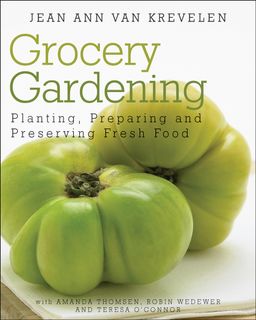Purple carrots, blue corn, spotted lettuce and rose pink beans. These are just some of the unusual and delicious vegetables you can grow from seeds in your garden.
Nest in Style Podcast: Eager to learn more about seed starting? Have questions about heirlooms and hybrids? Or, just want more professional garden design tips? Don't miss this Nest in Style podcast episode and hear from three nationally-recognized gardening experts: Nan Sterman, Chris McLaughlin and Rebecca Sweet.
What I'm Growing: While you're listening to Nest in Style, why not look over some of the seeds that I'm growing in the garden this year? You'll see they aren't your average grocery store vegetables.
Beans - "I was determined to know beans," wrote Henry David Thoreau in the late-19th century. And I know just what he means. I love growing beans from seeds. Here are a few beans I've grown in my garden already or that I'm trying this year for the first time.
Bean, Purple Podded Pole - Shown in picture above; purple heirloom bean of northern European origin. Turns green when blanched.
Bean, Ideal Market Pole - Very productive, stringless green pole bean, shown in picture above from harvest 2009.
Bean, Red Swan Bush - Beautiful dusty, red-rose snap bean, which I'm eagerly trying for first time this year. Just think how lovely it will look with purple podded pole beans.
Bean, Pencil Pod Wax Bush - Stringless yellow wax bean that is great for freezing or canning. Trying this one for first time. As you can probably tell, I prefer my beans in unusual colors.
Bean, Painted Pony Bush - Dual purpose bean with long stringless green beans, which later grow to become attractive dry beans in brown and white. These dry beans are highly recommended for soups and stews. I'm trying this variety for the first time, because I'm eager to taste and compare both types of beans.
Bean, Dragon's Tongue Bush - Wax bean with cream-colored pods and thin purple stripes, which disappear when blanched. Below is a picture of some beans I grew in 2009.
I'm growing a lot more than beans, of course. Below are just a few vegetables I'll sow in my garden this year.
Carrot, Cosmic Purple: Bright purple carrots with shades of yellow and orange. Trying for first time.
Carrot, Jaune Obtuse Du Doubs: Lemon-yellow carrot with fine, sweet taste. Trying for first time.
Carrot, St. Valery: French variety dating back to at least 1885, handsome bright, red-orange carrots. Trying for first time.
Carrot, Tonda di Parigi: Round in shape, these orange, 19-century Parisian heirloom carrots are 1 to 2 inches long. Ideal for rocky soil. Trying for first time.
Radish Helios: Yellow, olive shaped radishes; Baker Creek Heirloom Seed Company reports this heirloom came from Alzbeta Kovacova-Pecarova of Kosice, Slovakia (very near the village where my grandfather was born!) Trying for first time with great delight.
Radish, Purple Plum: Bright-purple skin with crisp white flesh. Trying for first time.
Radish, Long Scarlet: Long and slender, bright red radish that dates back to pre-1870s. Radish that looks a bit like a carrot -- How cool is that! Trying for first time.
Plus, I can't wait to try ...
Corn, Blue Jade: Steel-blue cobs that become jade-blue when boiled. Dwarf plants that grow 2 to 3 feet bear 3 to 6 ears of corn. One of the few sweet corns that can be grown in containers. Trying for first time.
Squash, Lebanese White Bush Marrow: Rare variety of cream, oblong summer squash, which is delicious baked or fried. Trying for first time.
Speaking of squash, I loved this winter squash I grew last year:
Squash, Musquee de Provence: Averaging 20 pounds, this French variety of winter squash has orange, blue and green colors that ripen to a deep, rich brown. The deep orange flesh is great for baking.
Salads will be made with greens such as these:
Lettuce, Merveille Des Quatre Saisons (Marvel of Four Seasons): With a name like that, how could I not grow this French variety? This bibb letuce has ruby-red leaves with tightly folded green hearts. I've grown this tasty heirloom several years.
Lettuce, Forellenschluss: This old Austrian heirloom is a favorite of mine. The green romaine leaves are speckled with deep rose, and stand up well to salad dressings.This lettuce is as beautiful as it is delicious.
Arugula, Apollo: Productive variety of domesticated rocket; high in vitamin C; excellent in salad mixtures.
That's not all I'm growing this year either. They'll be more cool-season and warm-season plants, which I'll start inside from seeds, direct seed out in the garden, or buy as transplants from local nurseries or farmer's markets. We're lucky here, for instance, to have many unusual varieties of tomatoes, peppers and eggplants available for purchase.
Whatever you decide to grow this year, just remember, it's important to rotate your vegetable crops each year. Want more information? Read the Seasonal Wisdom post on crop rotation.
Happy growing!





-2.jpg)
-1.jpg)

-5.jpg)





-1.jpg)
-2.jpg)













